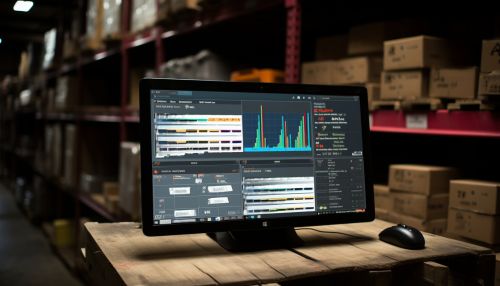Inventory Management System
Overview
An Inventory Management System is a tool that allows an organization to track goods across its supply chain. It optimizes the entire spectrum spanning from order placement with your vendor to order delivery to your customer, mapping the complete journey of a product.


Function
The primary function of an inventory management system is to control the storage, consumption, and movement of inventory or stock within a warehouse or a store. It involves the management of raw materials, components, and finished products, as well as warehousing and processing such operations.
Types of Inventory Management Systems
There are various types of inventory management systems that cater to different types of businesses and their specific needs. These include:
Perpetual Inventory System
A Perpetual Inventory System updates inventory levels in real-time, reflecting sales and purchases as they occur. This system provides a highly detailed view of changes in inventory and allows businesses to respond to changes in customer demand more effectively.


Periodic Inventory System
A Periodic Inventory System updates inventory levels at specific intervals, such as weekly or monthly. This system is less detailed and requires less time and resources to manage, making it suitable for smaller businesses.
Just-in-Time (JIT) Inventory System
The Just-in-Time (JIT) Inventory System aims to minimize inventory costs by only producing or purchasing inventory in response to actual sales. This system requires accurate forecasting of demand and reliable suppliers.
Dropshipping
Dropshipping is a type of inventory management where the retailer does not keep goods in stock but instead transfers customer orders and shipment details to either the manufacturer, another retailer, or a wholesaler, who then ships the goods directly to the customer.


Benefits of Inventory Management Systems
Inventory management systems provide numerous benefits to businesses, including:
- Improved inventory accuracy: By tracking inventory in real-time, businesses can ensure they have accurate information about their stock levels at all times.
- Enhanced customer service: With accurate inventory information, businesses can provide better service to their customers by ensuring that products are always available and delivered on time.
- Reduced costs: By optimizing inventory levels, businesses can reduce the costs associated with carrying excess stock.
- Increased efficiency: Inventory management systems can automate many of the tasks associated with managing inventory, freeing up staff to focus on other areas of the business.


Implementing an Inventory Management System
Implementing an inventory management system involves several steps, including:
- Identifying needs: The first step in implementing an inventory management system is to identify the specific needs of the business. This includes understanding the type of inventory, the volume of inventory, and the complexity of the supply chain.
- Choosing a system: Once the needs have been identified, the next step is to choose a system that meets those needs. This involves researching different systems, comparing features and costs, and selecting the system that offers the best fit.
- Training staff: Once the system has been chosen, staff will need to be trained on how to use it. This includes understanding how to input data, how to interpret reports, and how to troubleshoot any issues that may arise.
- Monitoring and adjusting: After the system has been implemented, it's important to monitor its effectiveness and make any necessary adjustments. This includes regularly reviewing inventory levels, sales data, and other key metrics.


Conclusion
Inventory management systems are a crucial tool for businesses of all sizes. They provide a way to accurately track inventory, improve customer service, reduce costs, and increase efficiency. By choosing the right system and implementing it effectively, businesses can greatly improve their operations and their bottom line.
See Also
- Supply Chain Management - Warehouse Management System - Enterprise Resource Planning
